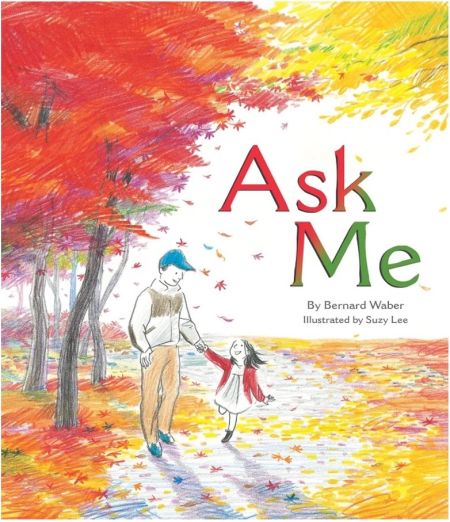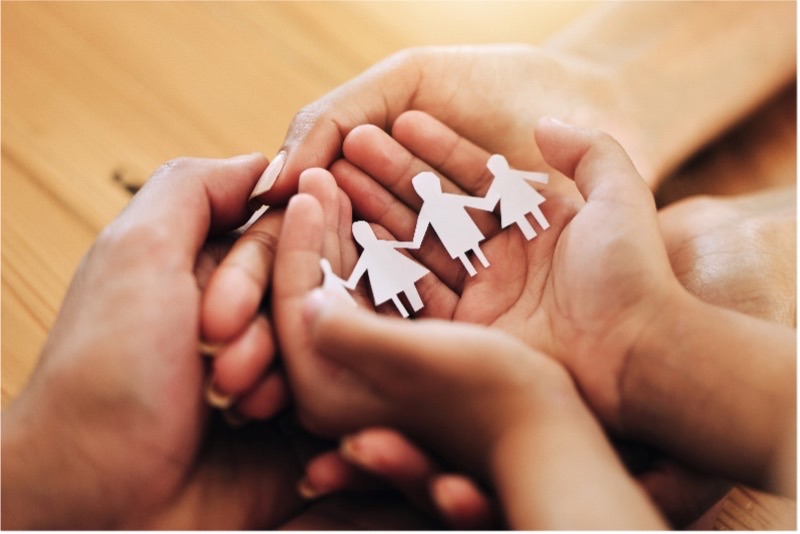January/February 2024 newsletter
The present of presence
When you think back on your childhood, what moments made you feel the most loved? The most respected? The most valued? What moments inspired you and lifted you up? Now think about the people you shared those moments with – the people who helped make those moments possible, just by being there. Just by being present.
One of the most important things an early childhood educator can do is offer our time and attention. Being present is a great way to provide support and encouragement for children. This helps give children the tools they need to learn, explore and grow.
Quality time spent with a child allows educators to learn more about them. A child's culture, language, values and identity shape who they are. The more educators know about each child, the better they will be at meeting their individual needs. This is what responsive care and learning is all about.
Responsive and quality care is the gift of an educator. It is a gift that does not cost a lot of money and is not wrapped up with a shiny ribbon. It is the gift of our presence. Responsive care tells children that they are important and assures them that their needs are met. It is our commitment to walk beside children, and work with them to create opportunities for learning that celebrate their identities and the gifts they offer the world.
The best way to teach our children is to be there for them, to guide them and show them how to be the best that they can possibly be. Our children will always value our presence more than our presents.
Anonymous
Quality time: the gift that keeps on giving
Tips for creating moments of meaning with children in your care
Quality time is very important when working with young children. Educators should strive to be present, both physically and emotionally, in their practice. Giving children our full attention creates meaningful moments of connection with them. Asking questions and listening to what children have to say shows them they are valued, heard and seen. This also strengthens positive relationships between educators and the children in their care.
Some of the ways that educators can provide moments of quality time with children include:
- Cooking and sharing a meal together: this provides a chance for children to share their culture and learn about what other families do for mealtimes.
- Children’s choice: allow children to choose a group activity or a read-aloud book. This gives children the opportunity to share an interest that is special to them.
- Daily connection time: take a moment to ask a child a question about their favourite activities. Play a game they enjoy or share a joke - this can build a sense of connection with children.
- Communicating with infants: Use words to tell infants what is going on around them. During the day, describe what you are doing and why, respond to their cues and imitate the sounds infants make. A warm and responsive relationship with infants helps them develop a sense of worth in their communication efforts and encourages them to try again.
Frugal and found
Responsive care doesn’t have to be expensive.
Part of providing responsive care is providing a culturally responsive learning environment. Educators create responsive environments by presenting children with a variety of meaningful tools, toys and materials. The best part: acquiring these materials does not need to carry a heavy price tag. In fact, engaging learning experiences for children can be created using items found around the house or at the local dollar store.
Use plastic water bottles as sorting containers or wheels for building vehicles. Add paper towel rolls, stickers and buttons to a loose parts centre to spark a child’s imaginative play. Future architects in your program can use inexpensive popsicle sticks as the walls of a castle or the mast of a ship.
Nature also provides a free supply of items that can be included in your program. Try including items found in nature in your crafts, activities and science inquiries. Transform pinecones into easy birdfeeders. Gather some feathers and stones for a quick float-or-swim experiment. The possibilities are endless.
A day spent with you is my favourite day.
Winnie the Pooh

Book Nook
A father and daughter walk through their neighborhood, brimming with questions as they explore their world.
“With so many things to enjoy, and so many ways to ask—and talk—about the wonders all around us, Ask Me offers a snapshot of an ordinary day in a world that is anything but. This story is a heartwarming and inviting picture book with a tenderly written story by Bernard Waber and glorious illustrations by Suzy Lee” (from the publisher).
Recommended for children between 4 and 7 years old, this beautiful children’s book provides a doorway to the mind and interests of a child. It reminds us that all we really need to do to bond with a child is ask them questions and listen to what they have to say.
Grow
“People thrive in responsive, reciprocal, respectful relationships with others, and with place and culture. Working within a pedagogy of listening means educators are living and learning alongside children and families, with an openness to new possibilities. Strong relationships are nurtured through respect, time, care, and understanding” (B.C. Early Learning Framework, 2019, p. 25).
Consider this reflective question:
- How might children and adults seek to know one another’s gifts? (p. 73)
How can we reframe and expand this question?
- How can I create experiences for children to share their gifts with other children, other educators, and myself?
- How can I foster environments that allow children to discover and nurture their gifts?
- How can I share my own gifts and interests with children in meaningful ways?
Explore
Activity idea: “Personalized greeting”
Give children the choice of how they would like to be greeted each day: a hug, high-five or a three-second dance.
Materials:
- Construction paper cut into three different shapes (heart, music note and hand)
- Tape
Directions:
- Cut out a heart, a music note and a hand from construction paper and tape it to the wall by an entrance the children use.
- Discuss with children that each day they can decide how they want to greet their educators:
HEART = hug
HAND = high-five or handshake
MUSIC NOTE = 3-second dance
This activity allows children the opportunity for connection with their educators in a way that best fits their individual needs each day.
For an example of this activity, check out this video.

The way you greet someone determines how he will welcome you.
Hungarian proverb
Do you know?
The Early Learning and Child Care branch provides learning opportunities for educators
The work of early learning educators is very valuable. It ensures children develop crucial physical, cognitive and social skills that set them on the path to future health and success. The ELCC branch supports the work of educators by providing opportunities and professional resources to help you build the knowledge, competencies and skills you need to best support children.
The Yukon early learning educators website is a good resource for early childhood educators to explore learning and development opportunities including upcoming events.
Upcoming learning opportunities for early childhood educators working in licensed early learning and child care programs include:
- Culturally responsive practice in action
- Turning setback into success
- Encouraging words: How do you respond when a child says, “I can’t”?
- Reconnection in response to stress
- Self-regulation
For information on workshops, events, training and engagement sessions, or to register for an upcoming event check out the News and events page.